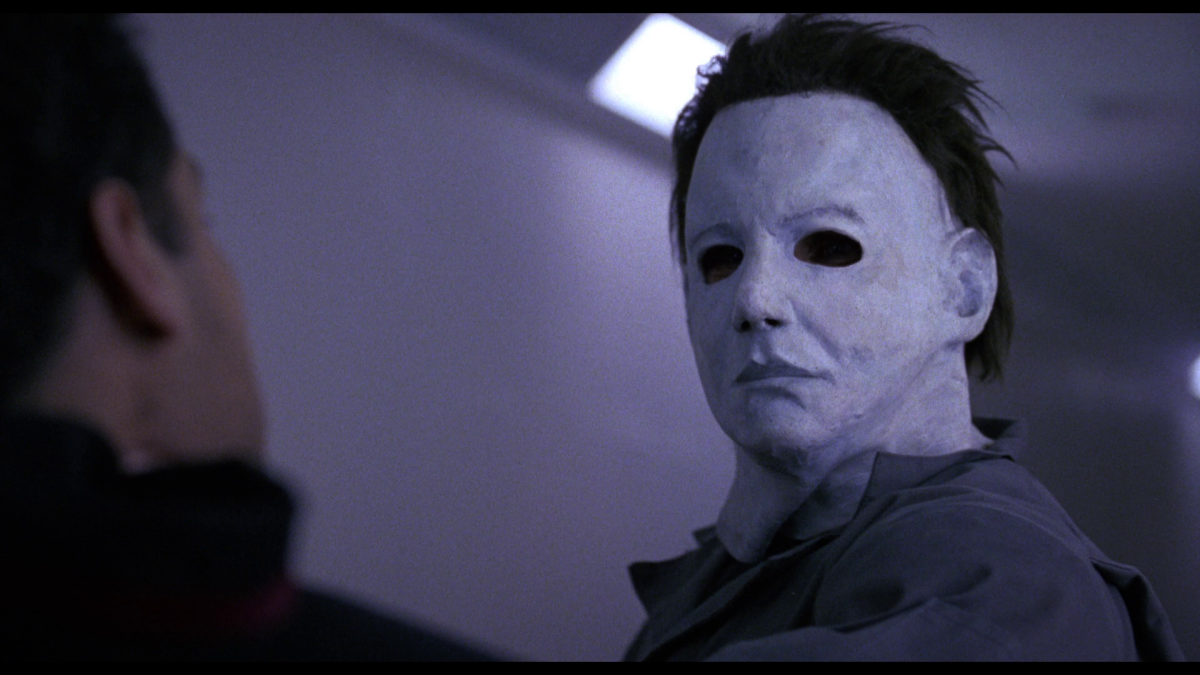It’s officially autumn, which means Halloween is right around the corner. That usually leads to the titular series coming back into heavy rotation in horror fan households, which inevitably leads to a viewing of the Paul Rudd-starring sixth installment of Michael Myers’ stomping grounds.
Halloween: The Curse of Michael Myers went through a tumultuous production, all through pre- and stretching into post. Suffice it to say, the version most people saw was nicknamed “the theatrical cut,” which was not well received.
However, for the first time, in 2014, Halloween 666: The Producer’s Cut was made available for general audiences. With 70 minutes of additional or substituted footage, while nowhere near the best of the franchise, it was a marked improvement. But the alternate ending was strange, even for an at this point off-the-rails series.
Halloween 6‘s theatrical and alternate endings explained
If you’ll recall, the original ending had Rudd’s Tommy Doyle inject Michael with green goo, beat him with a lead pipe, and escape the evil Cult of Thorn with his romantic interest and her baby, Michael’s nephew, in tow. Donald Pleasance’s Doctor Loomis ominously says he has some “unfinished business” to take care of, and we cut to a picture of Michael’s mask overlayed with Loomis’ screams in the background. Fade to black.
The new, updated ending, meanwhile, has Tommy instead placing some runes on the ground, invoking their power, and stopping Michael in his tracks because of the stones before escaping. Loomis comes in and finds “Michael” on the ground, but after taking off the mask, it turns out to be the villainous Dr. Wynn, leader of the Cult of Thorn.
Loomis then looks at his arm and sees the mark of the Cult of Thorn now burned onto his skin, indicating he’s the new leader of the cult. Michael has escaped. Nobody is safe. Cue Loomis breaking down and shrieking.
Why are there two endings to Halloween 6?

This open-ended finale was kept that way to be able to bring back both Michael and Loomis. However, Pleasance unfortunately passed away during post-production, hence the hasty and obvious reshoots and terrible editing present in the original cut. In either case, neither of these films – and they are distinct enough to be called different films – is exactly Haddonfield’s Finest Hour.
I do think both versions are worth a watch, though. Paul Rudd’s occasionally in comedy mode, which makes his “terrified” facial expressions look more maniacal and hilarious than scared. The Cult of Thorn is a dumb, dumb angle to take the series in, but, uh, I guess at least it wasn’t a total retread. It’s also better than both Halloween 5 and Resurrection, but the former is much funnier than any of the other Halloweens.










Published: Oct 16, 2023 01:28 pm